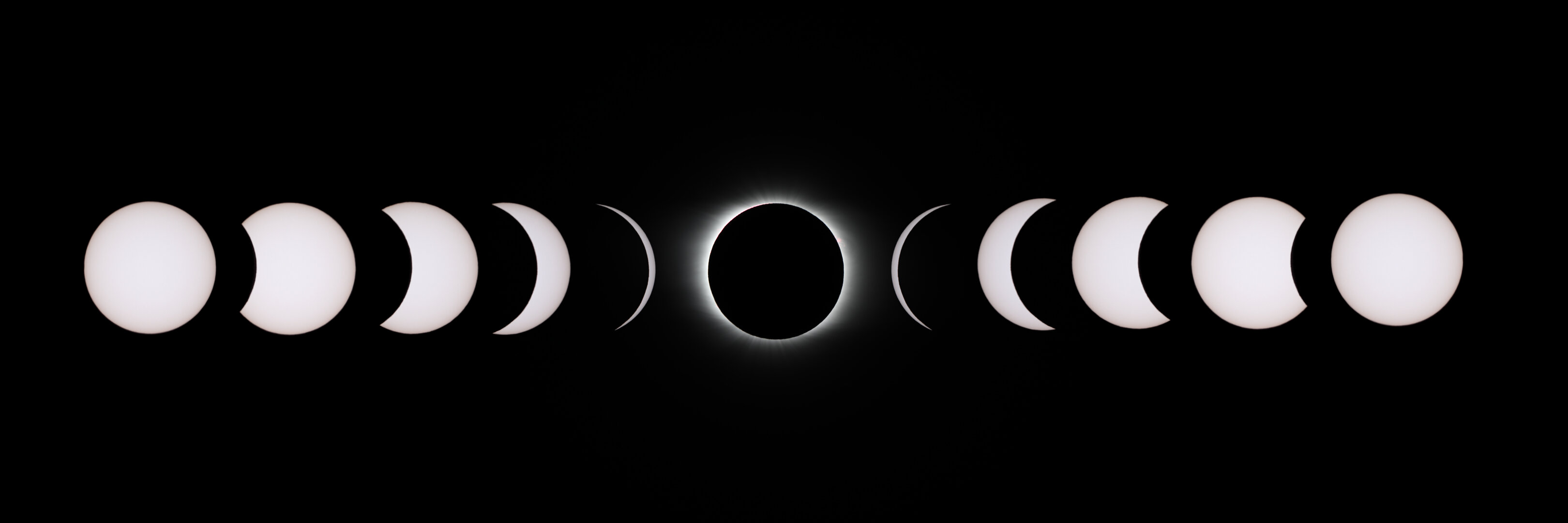What is an eclipse?
Two main types of eclipse can be observed from Earth: lunar and solar. In a lunar eclipse, Earth is between the Sun and the Moon. In a solar eclipse, the Moon is between the Sun and Earth.
What is a solar eclipse?

A solar eclipse happens when the Sun, Moon and Earth are perfectly aligned. The Moon blocks light from the Sun and casts a shadow on Earth. The eclipse is visible to anybody within this shadow.
A solar eclipse can be either total or partial. During a total solar eclipse, the Sun, Moon and Earth are perfectly aligned and the Moon covers the entire disc of the Sun. During a partial solar eclipse, the three are not perfectly aligned, so only part of the Sun is covered by the Moon – it looks as though the Moon takes a bite from the Sun!
Solar eclipses occur about every 16 months and ‘totality’ (when the Sun is completely covered by the Moon) can last up to seven and a half minutes depending on the Earth-Moon-Sun geometry. Considering that the Moon takes 28 days to orbit Earth, why do we not see a solar eclipse every month? Because the orbit of the Moon around Earth is tilted, so the Moon often crosses above or below the imaginary line connecting the Sun and Earth. It is only when the Moon crosses this line that we see a solar eclipse.

What is a lunar eclipse?

A lunar eclipse occurs when Earth comes between the Sun and the Moon and (part of) the Moon is shaded by Earth. Lunar eclipses can be seen by anybody on Earth for whom the Moon is above the horizon, and are therefore much more common than solar eclipses. They take place up to five times a year and totality can last up to 100 minutes.
When the Sun, Earth and Moon are well aligned, the Moon is completely covered by Earth’s full central shadow – at these times we see a total lunar eclipse. Some sunlight is refracted onto the Moon through Earth’s atmosphere, giving the Moon a reddish colour.
When the Moon is less perfectly aligned with Earth and the Sun, the full shadow may cover only part of the Moon’s surface – at these times we see a partial lunar eclipse.
When the alignment is even less perfect, the Moon falls within the more diffuse partial shadow cast by Earth. The resulting slight shading of the Moon’s surface is much more subtle and difficult to observe.












